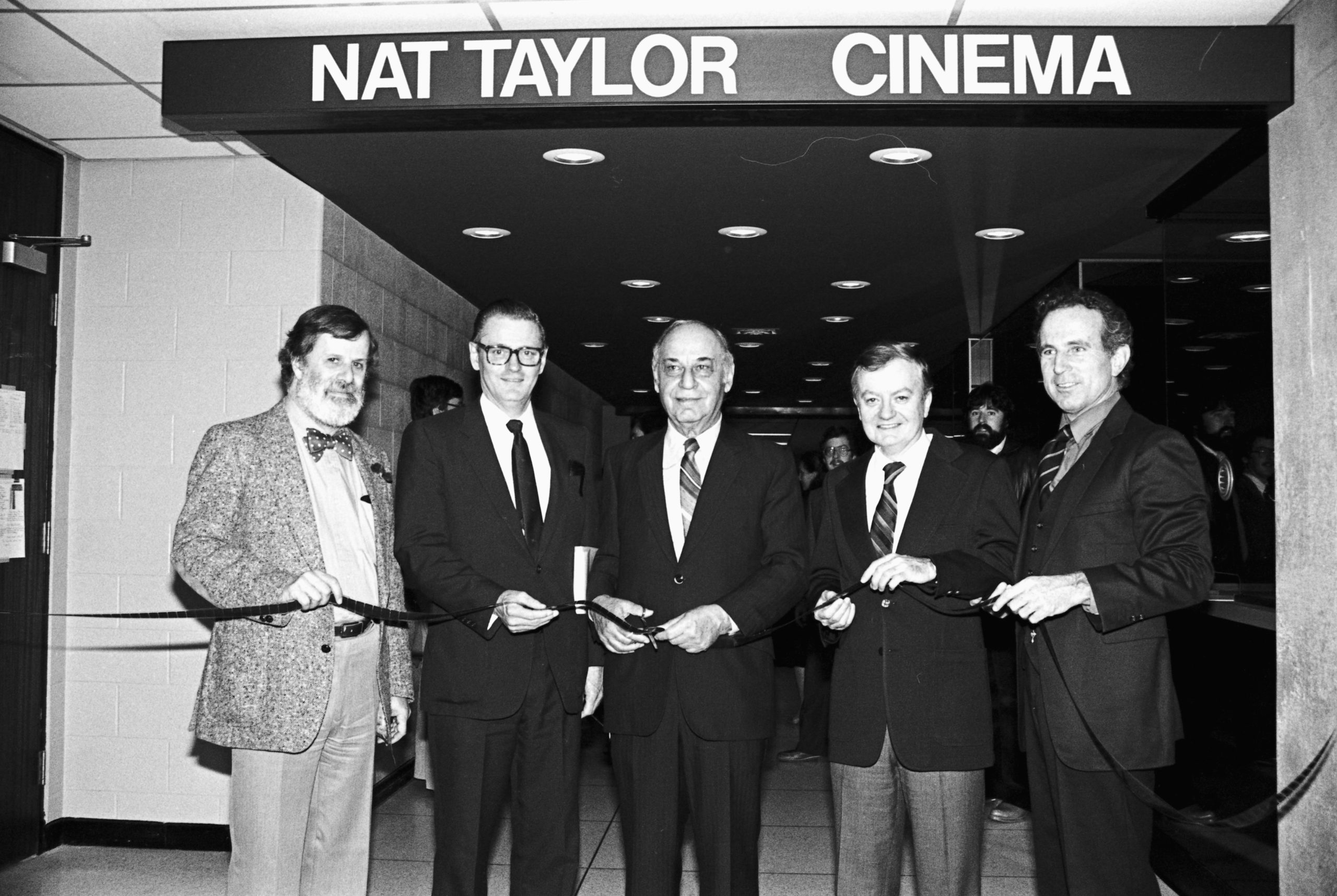Keeping It Reel
by Will Sloan
photography by Kyle Finbow
Walk down the hall of the Ross Building, and you’ll find a movie theatre marquee reminiscent of those that adorned so many neighbourhood cinemas during the golden age of Hollywood. It reads “Nat Taylor Cinema,” and since 1982, this unique space has been an active movie theatre within York University, with events serving both students from the Department of Cinema & Media Arts, and the public at large.

“For decades, Nat Taylor Cinema has been the shimmering heart and soul of our film program,” says John Greyson (MA ’10), an established Canadian filmmaker and influential faculty member at York.
Established in 1970, York’s film department quickly became a cornerstone of cinema studies in Canada. For more than five decades, it has contributed significantly to film education and research. In 1980, York further distinguished itself by introducing the nation’s first graduate-level film studies curriculum, broadening the scope of cinematic discourse in academia nationwide.

Central to this legacy is the Nat Taylor Cinema, where aspiring filmmakers immerse themselves in cinema theory and history while mastering industry-standard equipment. This dynamic space buzzes with activity, hosting student screenings, alumni showcases, faculty premieres and community events such as Cinema Politica and weekly Nat Taylor Tuesdays. By combining rigorous academic study with hands-on production experience, York’s film program has shaped generations of filmmakers, critics and scholars. Many successful alumni continue to make their mark in the industry, a testament to the program’s effectiveness.
For decades, Nat Taylor Cinema has been the shimmering heart and soul of our film program
“It’s our communal campfire – the place we gather to share our stories,” Greyson says.
But who was Nat Taylor? If you watched Canadian TV in the late ’90s, you probably remember him from a Heritage Minute: at a smoky Ottawa movie theatre in 1957, a couple asks the owner when he’s finally going to play the season’s most anticipated movie, The Bridge on the River Kwai. “Well, I’m still doing 50 per cent business with Witness for the
Prosecution,” he tells them. Meanwhile, his staff is besieged by calls from Columbia Pictures threatening that if the Elgin didn’t take Kwai immediately, it would go to a competitor. Suddenly, the owner has an idea: why not play the older film in a smaller auditorium on neighbouring land, and the newer one in the larger house?


With this idea, the multiplex was born – and Taylor would continue to expand. Among his accomplishments, Taylor converted Toronto’s historic (and now closed) Uptown Theatre from a single-screen movie palace to a bustling five-screen multiplex in 1969. Ten years later, he embarked on the paradigm-shifting, 18-screen movie theatre in Toronto’s Eaton Centre shopping mall, which was the flagship theatre of the Cineplex Corporation. This chain, launched in partnership with producer Garth Drabinsky, now accounts for 75 per cent of Canadian box office sales.
Ten years later, he embarked on the paradigm-shifting, 18-screen movie theatre in Toronto’s Eaton Centre shopping mall, which was the flagship theatre of the Cineplex Corporation
Born in 1906 in Toronto, Taylor’s entrepreneurial spirit was evident from an early age. As an adolescent, he sold ads for movie theatres on the back of postcards, and by his late teens was managing his father’s College Street cinema. At age 28, he went into business for himself, opening 20th Century (Twinex) Theatres. The chain would grow to encompass 17 cinemas within the next decade, with Taylor soon overseeing many more after a partnership with Famous Players Canadian Corporation in 1941. Taylor even dabbled in filmmaking himself. As a producer, his most fondly remembered contribution to the art form is 1961’s The Mask, a kitschy thriller film that notched several firsts: first Canadian horror film; first Canadian 3D film; and first Canadian film of any genre to receive wide distribution in the United States.
Taylor received a barrister designation from Osgoode Hall in 1930 (Osgoode joined York University in 1968). On Oct. 29, 1981, Taylor was in attendance at York for the opening of the movie theatre he generously donated.
Over the years, the Nat Taylor Cinema has hosted events that enrich York’s film students’ education. From master classes with renowned filmmakers to exclusive screenings of cutting-edge works, the cinema bridges academic study and professional filmmaking. Its state-of-the-art projection capabilities let students study films in their intended format, from classic 35-mm prints to the latest digital technologies.
Given Taylor’s legacy as the inventor of the multiplex, it’s just a little ironic that the theatre that bears his name is a cozy, intimate, single-screen venue like the one he managed as a teenager. For generations of students, Taylor’s gift has provided the unique opportunity to see films the way they were meant to be seen: with an audience, on the big screen. ■
— With files from Deirdre Kelly